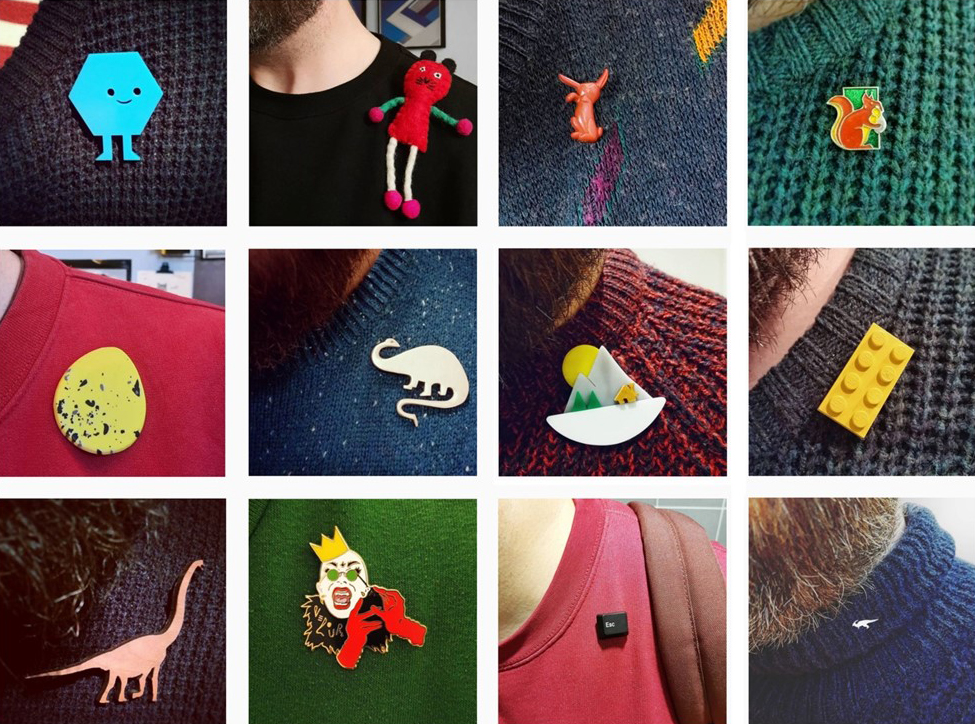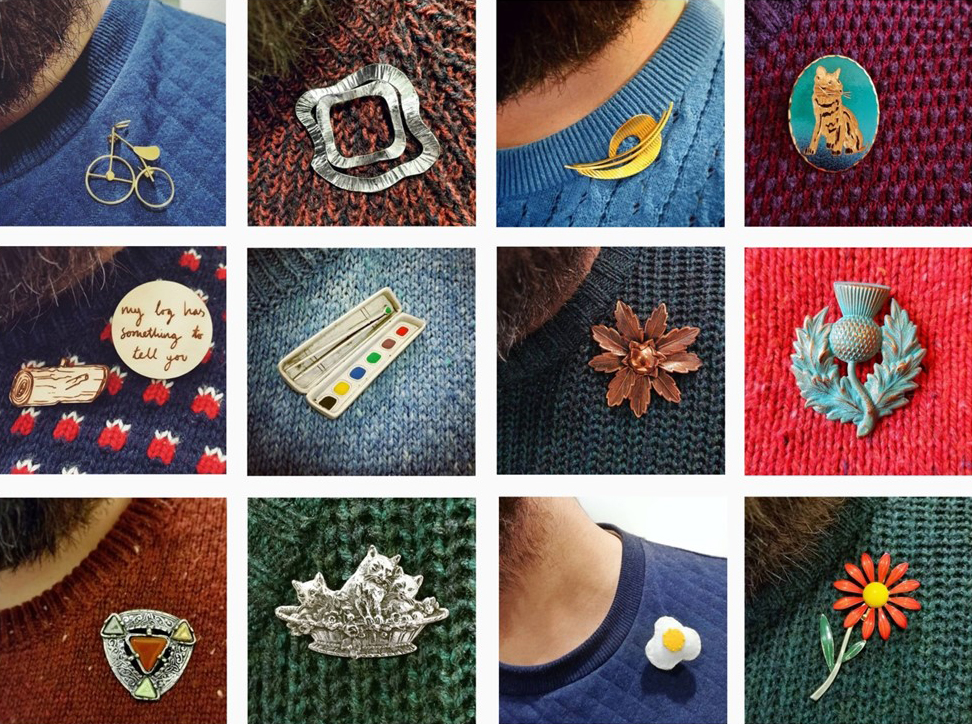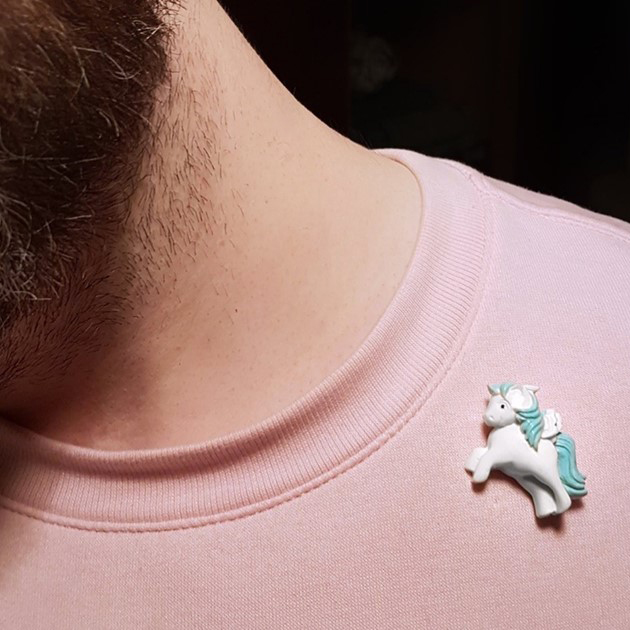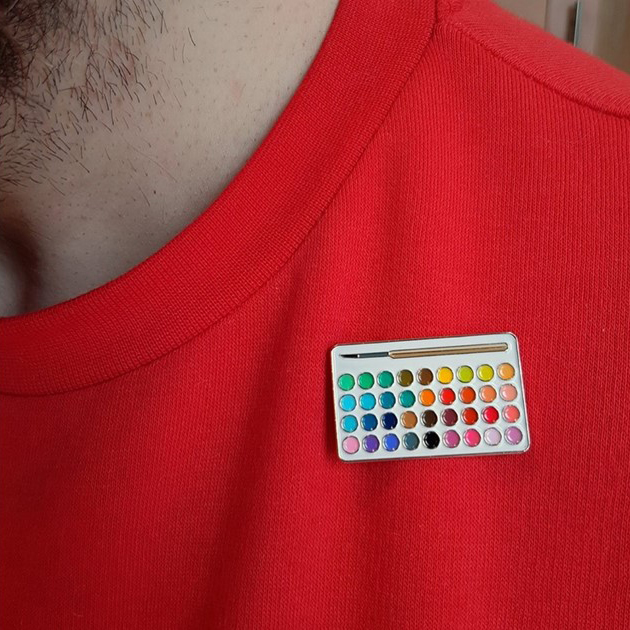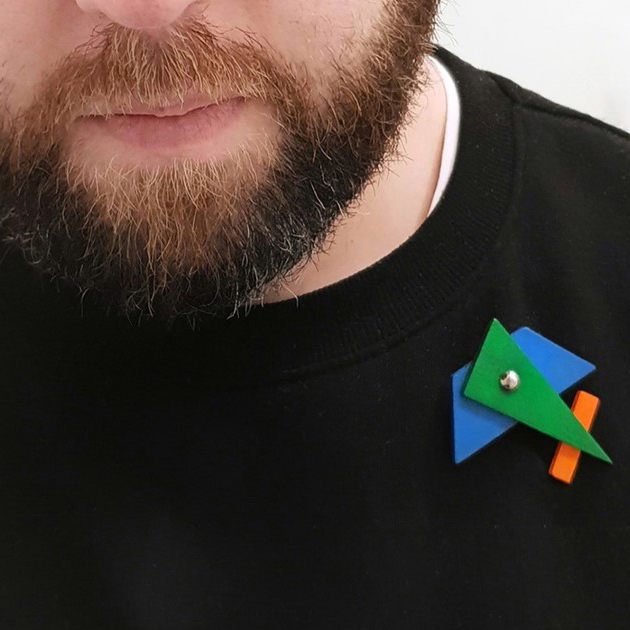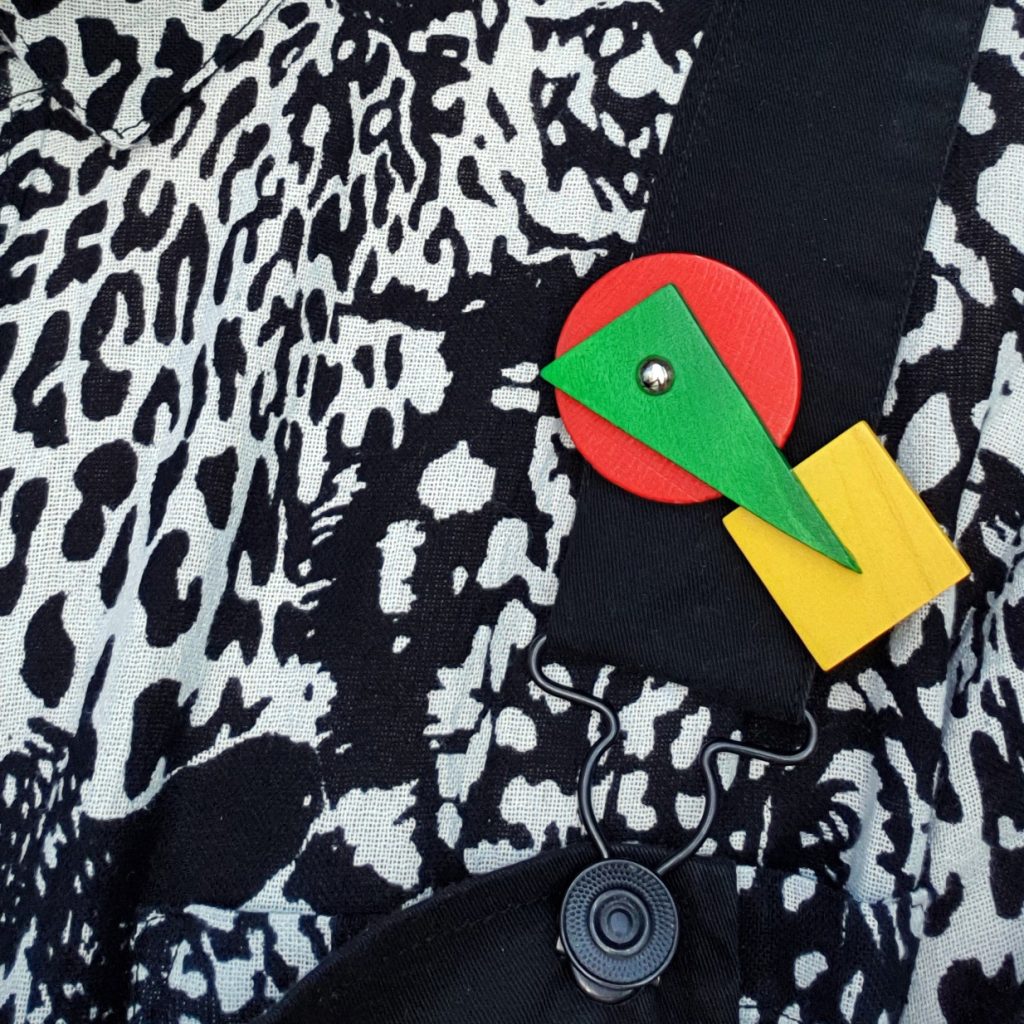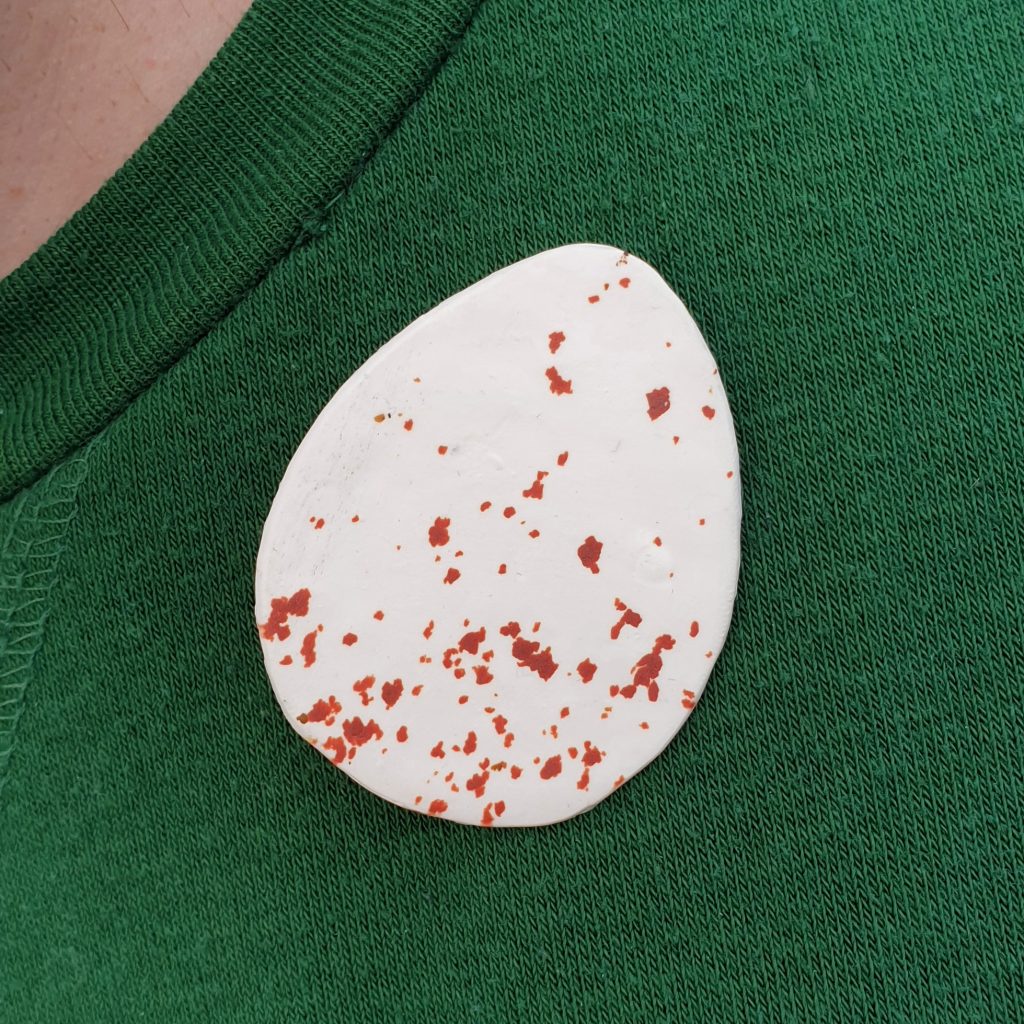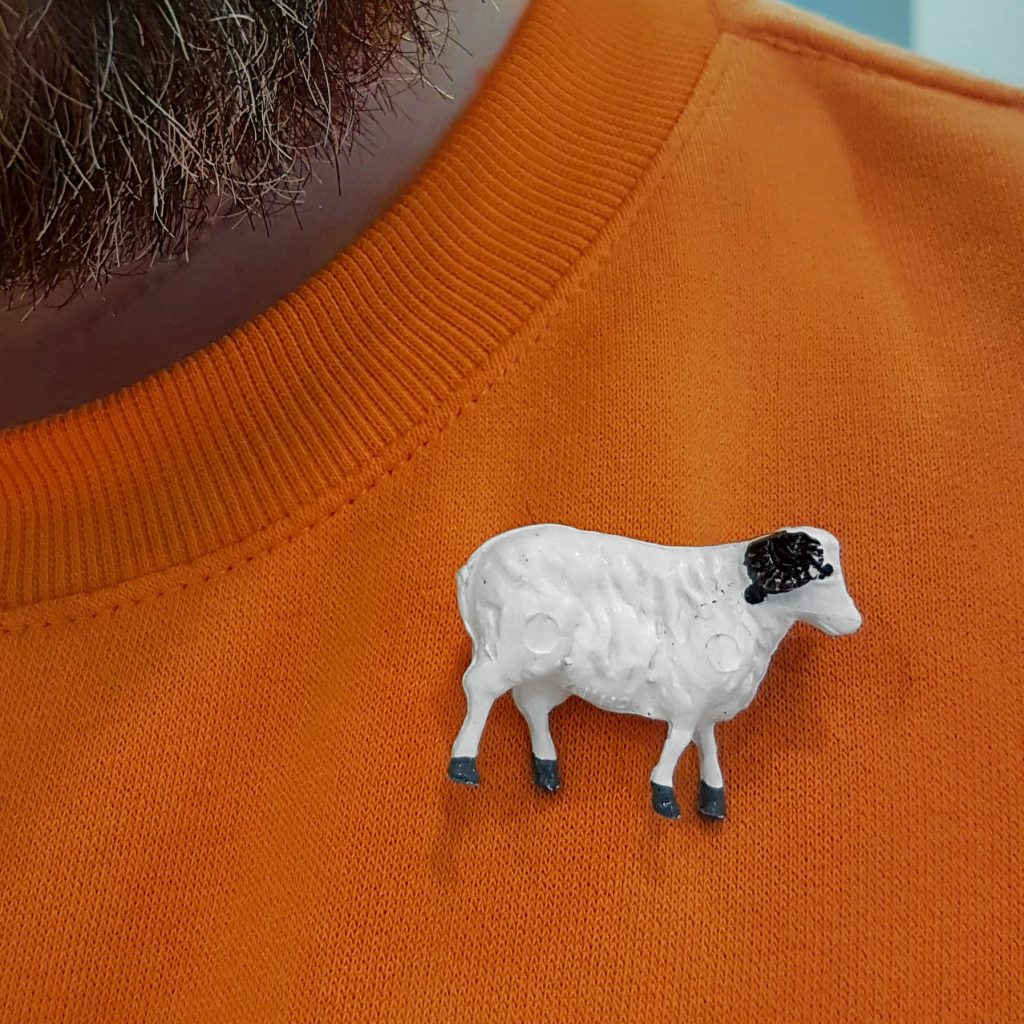Museums aren’t alone when it comes to collecting objects. Personal collecting, usually more rooted in identity or passion, can offer a glimpse into who people are and what makes them tick. Digital Media Content Manager Russell Dornan reflects on his brooch collection, what it says about his identity and shares some of his favourites from our collection.
Buckets of miscellaneous toys. Boxes of dog-eared books. A pristine Lea Stein fox brooch. A chipped crockery set. A ‘Live Laugh Love’ wall decal. A…wait. Is that really a Lea Stein brooch? At a car boot sale!?
I’d coveted one of Lea Stein’s timeless brooches for ages. Her vibrant, playful designs marked her out as one of the most innovative plastic jewellery designers of the 20th century. Born in France in 1936, Stein designed pins and other accessories made out of cellulose acetate. Her husband, chemist Fernand Steinberger, developed a process of laminating thin sheets of the acetate, resulting in multi-layered plastic creations. This process offered Stein a varied and dynamic material to work with.
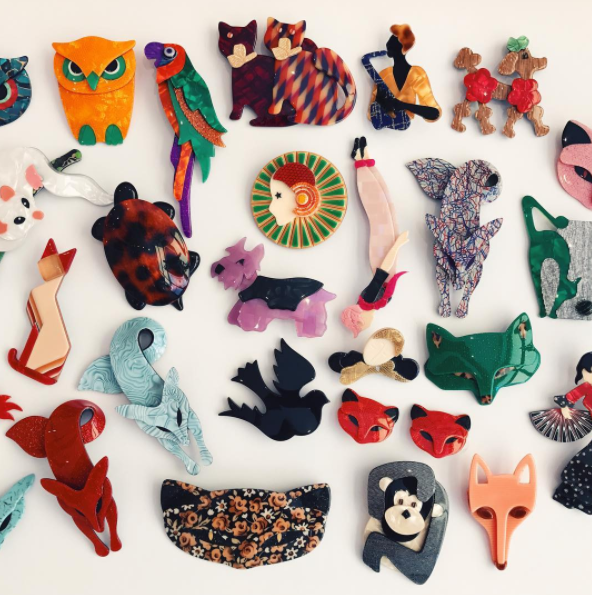
Stein produced these pieces from the late sixties to the early eighties, before taking a break and producing them again from the nineties onwards. Her designs ranged from animals to people to abstract shapes, most of which were inspired by Art Deco. They’re highly collectable, but as a (very) modest brooch collector, the prices were a bit too steep for me.
One of her most popular designs was “Fox”. It was produced in countless colour and pattern variations. It’s elegant and fierce, the sweeping form both figurative and easily recognisable. Fascinated by foxes for a long time, it was this piece that I hoped to add to my growing brooch collection one day. And it was this one that I just spotted at the car boot sale.
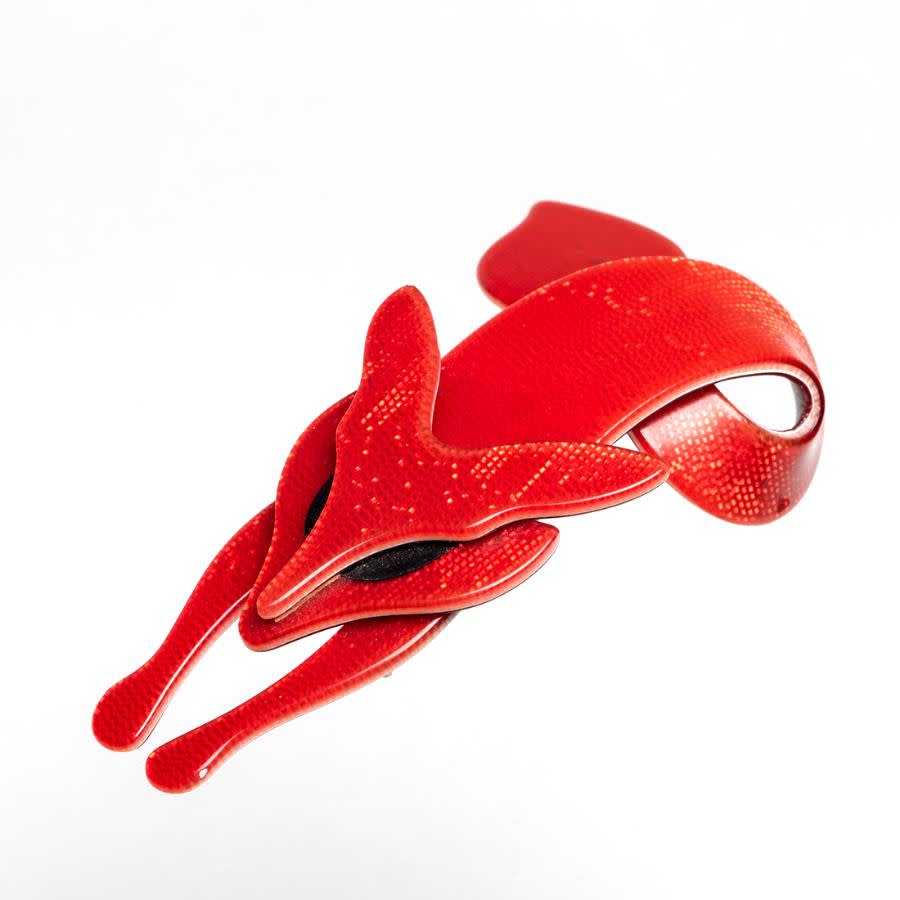
Collecting brooches was a gradual thing for me that started in the late noughties. I began collecting badges occasionally, but my attention turned to brooches after finding one so perfect that I couldn’t resist. It was in a charity shop in North London that I found the seed of my collection.
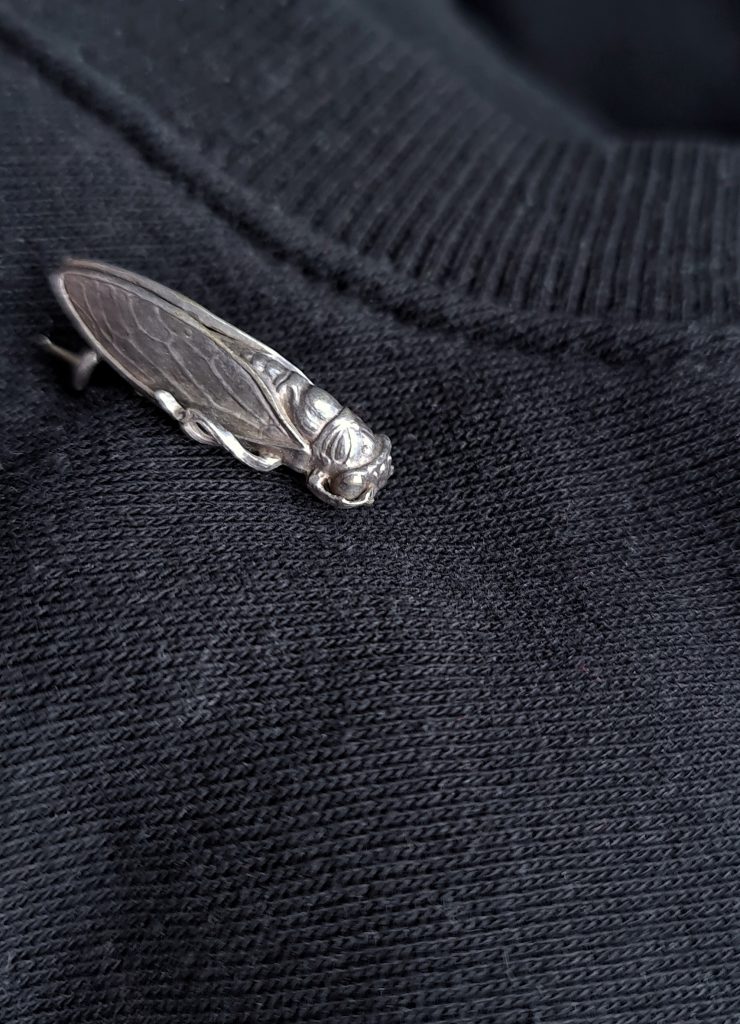
I remember seeing a tiny cicada pin nestled amongst garish costume jewellery and watches. It sat there modestly, unassuming and indifferent to the shiny, colourful pieces around it. My background is in natural history, and this elegant insect pin spoke to me. I’d never really given brooches any thought before this. They were often gaudy or twee. But then I found this toty wee cicada and over a decade later, here I am with a collection of hundreds of brooches. And writing about them for National Museums Scotland.
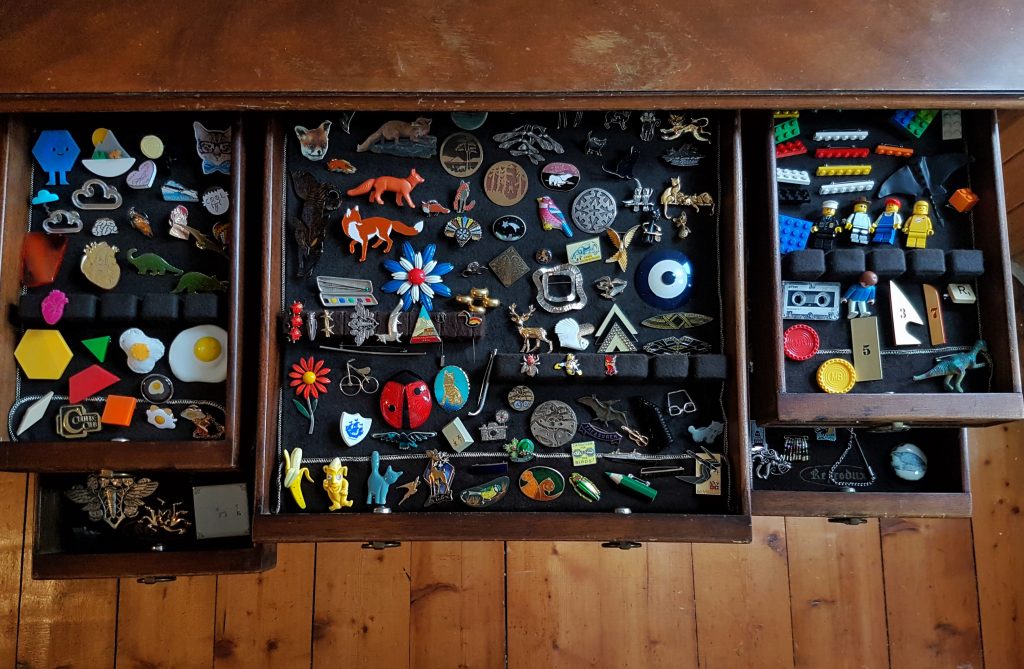
My taste in brooches has never really veered into the loud, sparkling variety (the most abundant kind I saw). I started collecting brooches before I came out and, now that I’m thinking about it, I didn’t want to draw attention to a side of myself I was trying to hide.
One of the pleasures of collecting brooches is the hunt: trying to find interesting and unusual ones that function as an extension of my personality. The material they’re made of is less important to me than the form and aesthetic. Acrylic, metal, wood, textile, stone and more, all are welcome. The more I collect, the more I want to collect, feeling a pull towards these objects and building a momentum.
In the beginning, I consciously went for more traditionally ‘masculine’ designs (whatever that means). Even if I was drawn to something more flamboyant, I’d avoid it for fear of being ‘outed’ by a brooch. While that might be a ridiculous (and slightly sad) thing to reflect on, it at least made searching for brooches more challenging and, therefore, more interesting. Silver linings, I guess.
Once I came out, though, I finally felt able to lean into sensibilities I hadn’t flaunted before. While I still wasn’t into heavily bejazzled pins, my collection diversified as I incorporated more ostentatious pieces. Brooches I’d have previously avoided were fair game as I developed my sense of style and taste (such as it is) now I was finally able to channel who I really was, rather than pretending to be something I wasn’t.
I suppose simply wearing a brooch at all could signal to some that I identify a certain way. But once I embraced a side of myself I’d fought against for years, the sartorial opportunities opened up (that’s just one of the perks of joining the LGBTQIA+ community! 
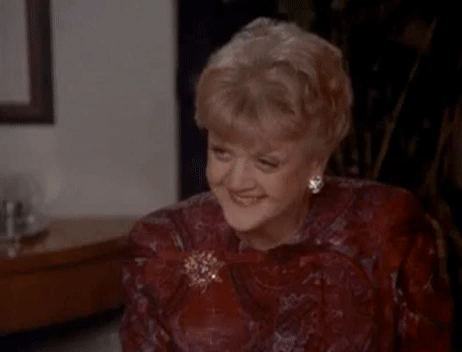
While some people collect figurines, coins or bikes, I happen to collect something I can adorn myself with. A by-product of this is that it provides people with a sort of shorthand for who I am: my character, sense of humour or taste (depending on the brooch of the day). This isn’t deliberate, but I like the idea of signalling something about myself that might resonate with someone on the same wavelength.

If nothing else, a brooch can offer a distraction or icebreaker with people I don’t know. I’m no good at small talk, but a peculiar brooch can provide a starting point, taking the edge off the rising panic I might feel when speaking to strangers. They might be small, but brooches can be a shield.
Drawing attention to myself by wearing a brooch to feel less exposed might sound like a paradox. We talk about wearing our hearts on our sleeve and brooches allow us to literally pin our personality on ourselves. But I don’t see them primarily as a means of expression. It’s about finding joy in something and being able to carry it with me. Ultimately, I collect brooches because I like them. I like their intricacy, design, meaning, memory or tactility. This is what I look for when I’m collecting.
Vintage shops are great for finding brooches, but I’d rather do the legwork myself and get a bargain. I love charity shops and car boot sales and get many of my brooches there. This was probably why Lea Stein’s brooches, with their considerable price, felt out of reach for me. Seeing one at the Battersea Carboot Sale in London that day made my heart leap. I already had a hundred or so brooches, but I’d never spent more than a few quid on them. Lea Stein pieces can go for above £100 but the sympathetic seller was willing to part with this one for £15 and I couldn’t believe it. I snapped it up. And I had the jewel of my collection.
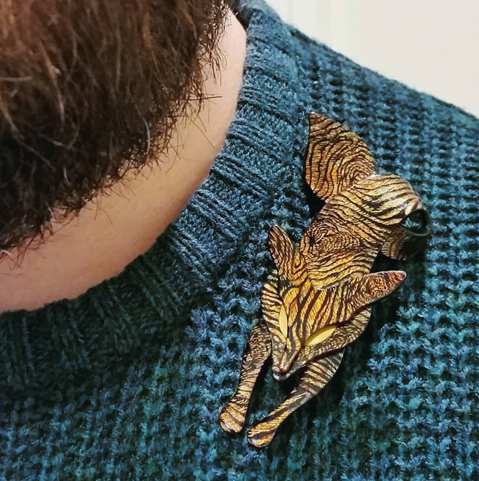
Having joined National Museums Scotland last year, I’ve been able to show off my brooches to a whole new group of victims colleagues, albeit mostly on screen. Now we’re going into the museum more, brooches are a great conversation starter. In fact, that’s how this blog came to be. Soon after I joined the museum, I dived into the collections online to look at some of the brooches. I wasn’t disappointed! Here are some of my favourites.
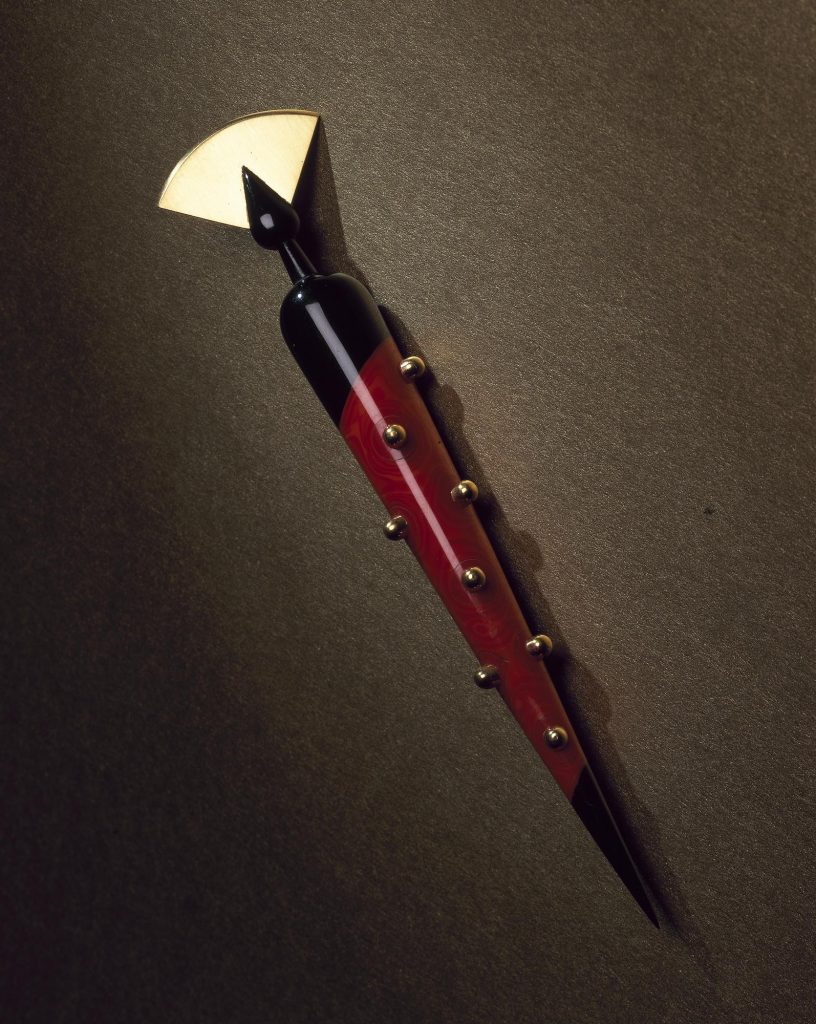
The sculptural red, black and gold brooch by Peter Chang is wonderful. It’s bold and classy, but still playful, and shows a sense of fantasy common in Chang’s work. Based in Glasgow for thirty years before he sadly passed away in 2017, Chang was known as the Scottish jewellery artist. His material of choice was acrylic, and he’d commonly use found pieces or off-cuts. A painstaking process, even Chang’s smallest pieces would take hundreds of hours to make. You can read more about the avant garde designer here.
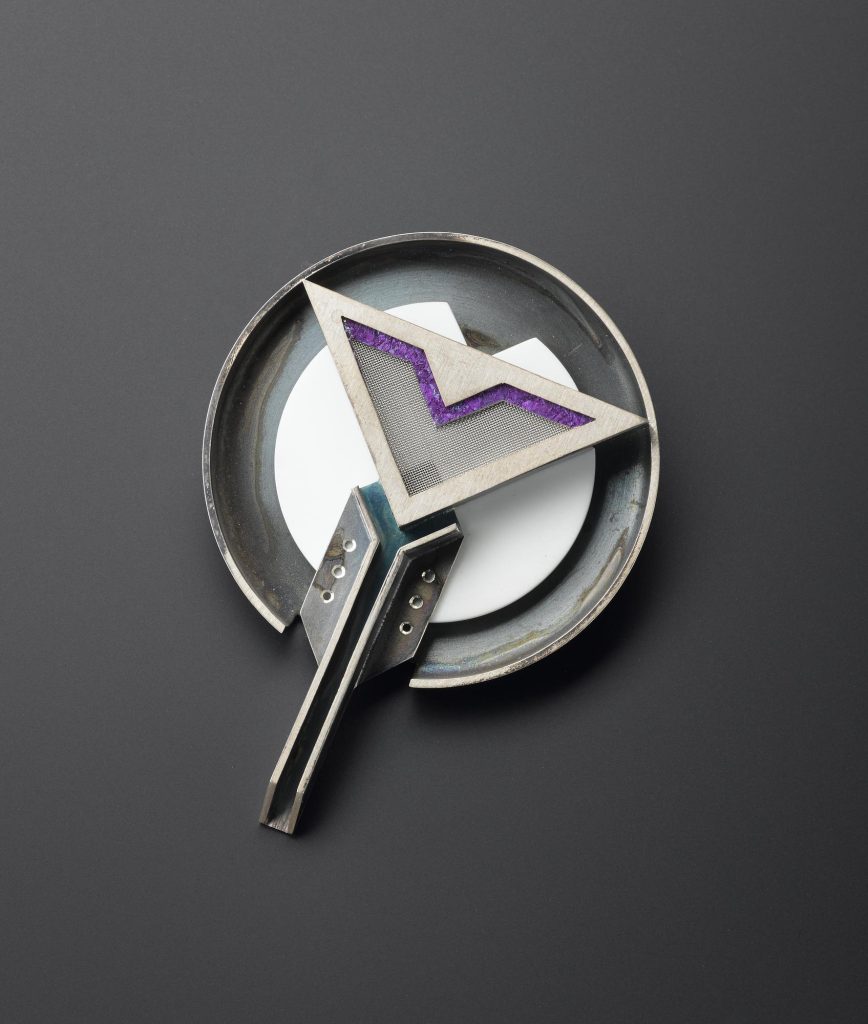
I’m low key obsessed with Roger Millar’s silver brooch. I love shapes and geometric, sculptural pieces and this is stunning. Millar studied silversmithing and jewellery design at the Glasgow School of Art and the Royal College of Art in London. In his own words, his designs “use these properties of surface and reflection, cool and warm, shade and shadow, allowing the forms to show or conceal their edges with various surface finishes, and to play construction games of balance and connection, of weight and apparent lightness.” All of this is clear in the brooch in our collection. I just wish it were in my collection!
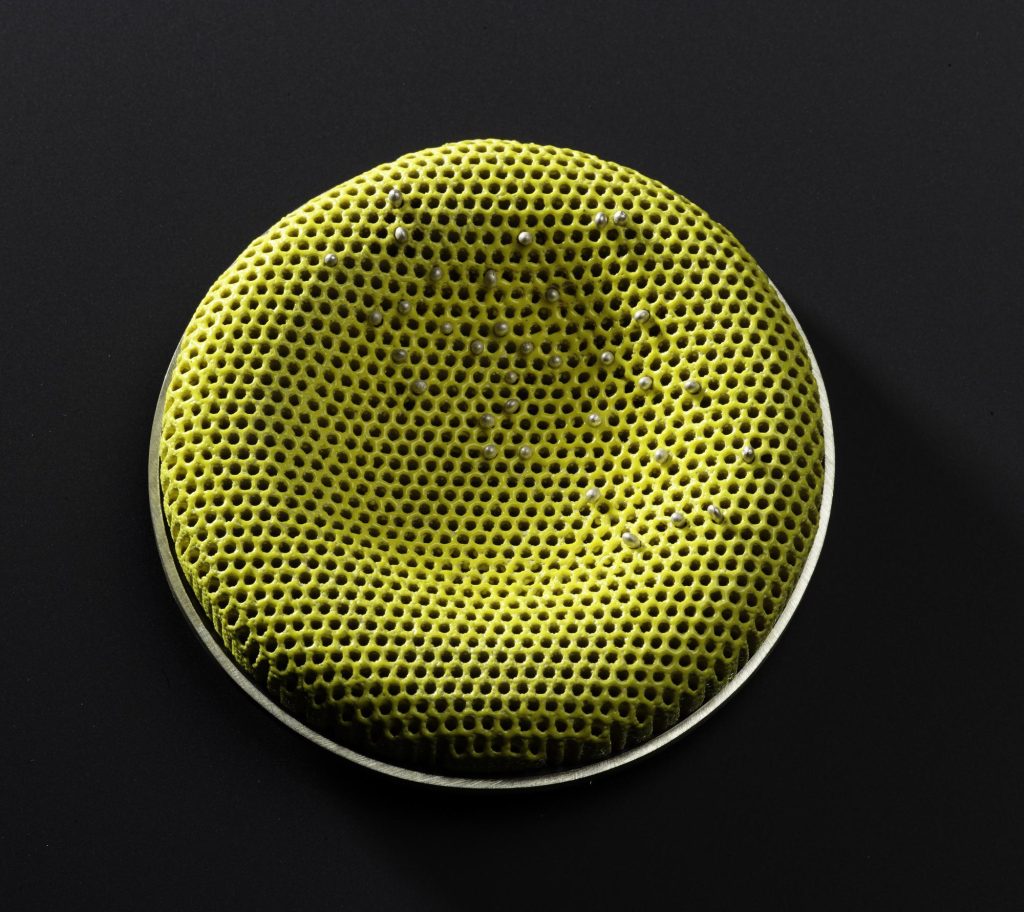
I’m a fan of Elizabeth Ann Campbell and her structural brooches in bold colours so it was great to see one of her pieces in the collection. Campbell graduated from Edinburgh College of Art and then spent a year as Artist in Residence at Glasgow School of Art before establishing her own studio in Edinburgh. She says “I like to find inspiration from concepts of visual literacy – ideas of balance, conflict and visual dominance which I represent using shape; material composition; and colour to create wearable statement jewellery.” You can watch her work and hear her talk more about her process here.
While brooches like these are still out of my reach, I enjoy and covet them from afar, appreciating their aesthetic and the work that’s gone into them. But I’ve also been inspired by them to make my own brooches. I love finding brooches and I am still collecting, but making my own pieces means I can create brooches that I haven’t been able to find anywhere else.
I’m glad our museums are open again so I can visit and explore the brooches on display. Next steps is to peek at a few behind the scenes. For the record, if any of the ones that I’ve shared above happen to go missing, you know it definitely wasn’t me. Honest
LGBTQIA+ stories have often been left out of mainstream history and we are keen to make them more visible through stories told by our objects, LGBTQIA+ voices in the museum and by bringing in external perspectives. Explore the stories so far.
And if you want to help us tell these stories, send us a pitch!

